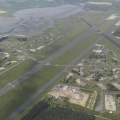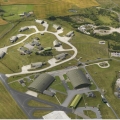Cold War Scotland
The Cold War was a period of sustained political and military tension which existed between the western (USA and NATO) and eastern (Soviet Union and Warsaw Pact) powers from 1947-1991.
Scotland occupies a stategic position between continental Europe and the North Atlantic, and a variety of installations were built there during the Cold War by the UK and NATO. From submarine bases and airfields to military ports and nuclear bunkers, traces of Cold War construction can be seen across Scotland, and a selection of aerial images of these are examined in this Feature.
Nuclear Response
Warning and Monitoring
Air Defence
Protect and Survive













